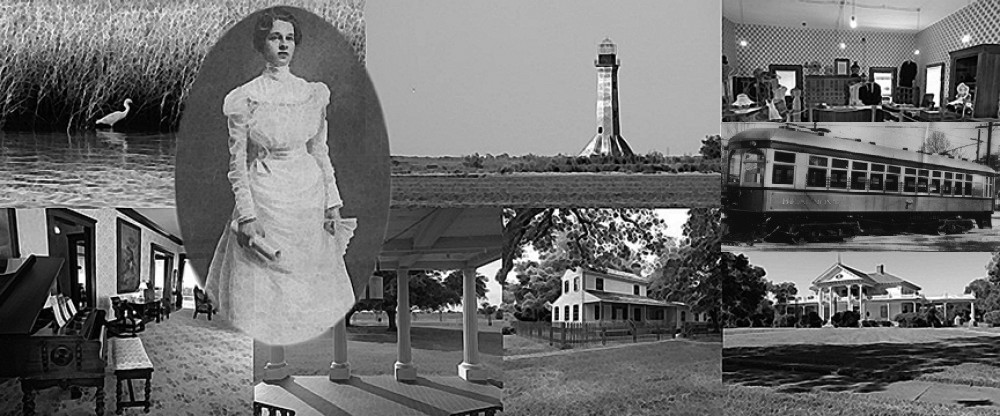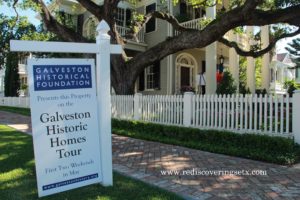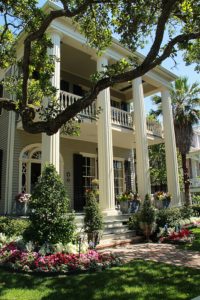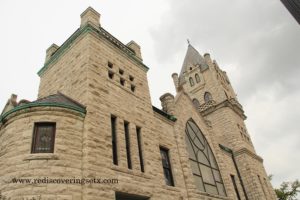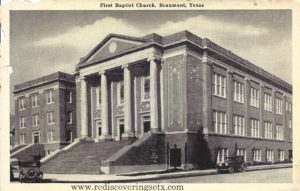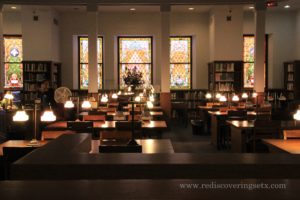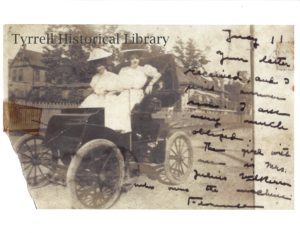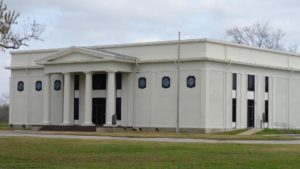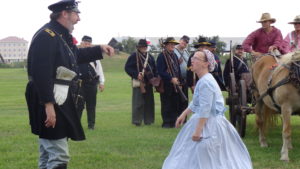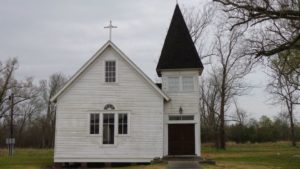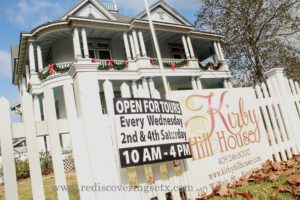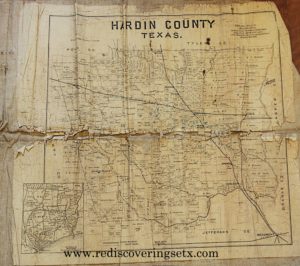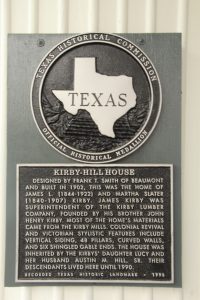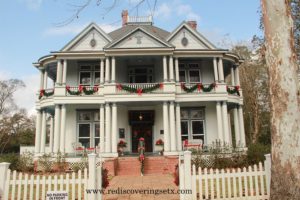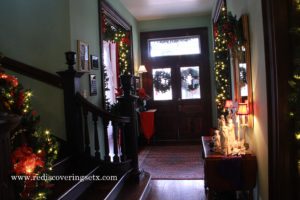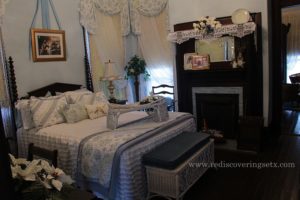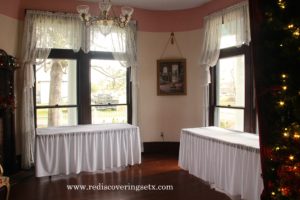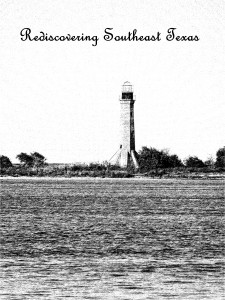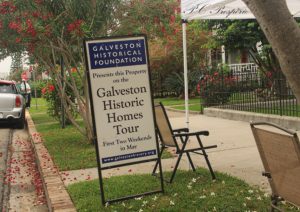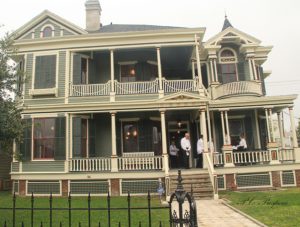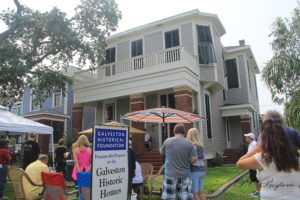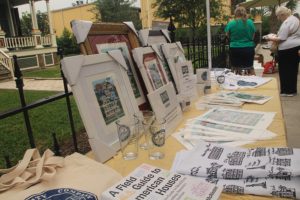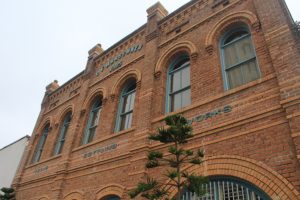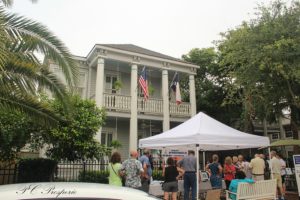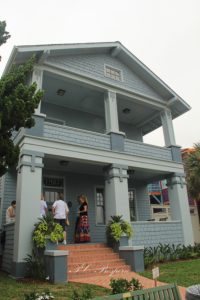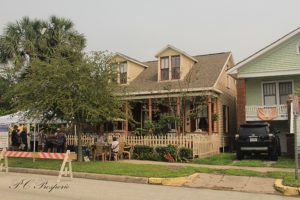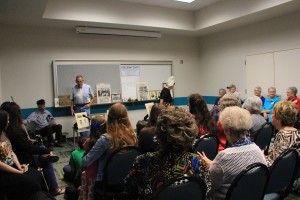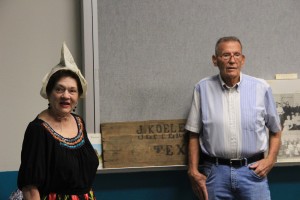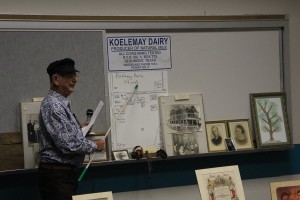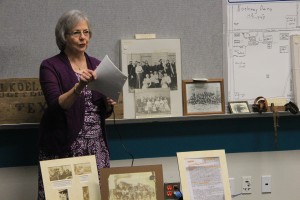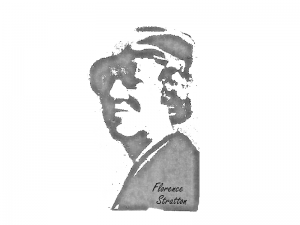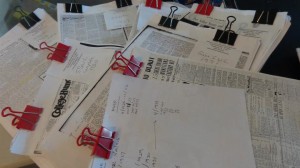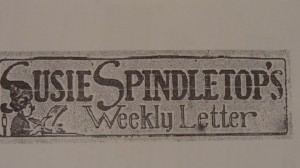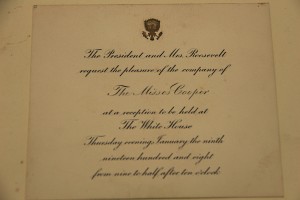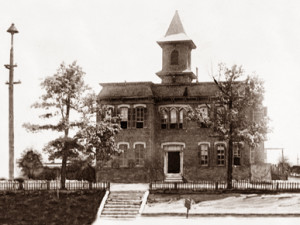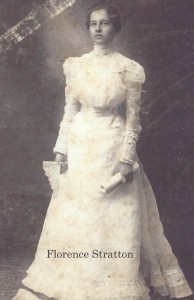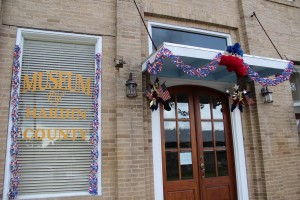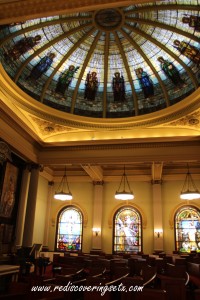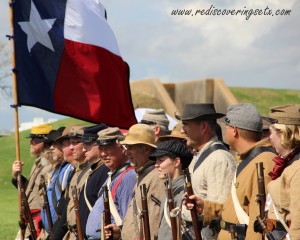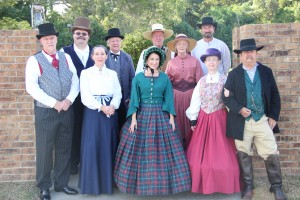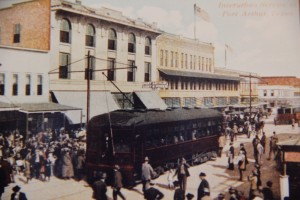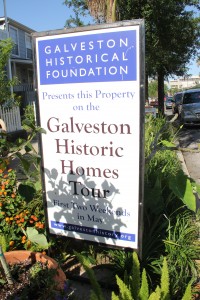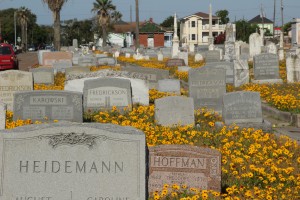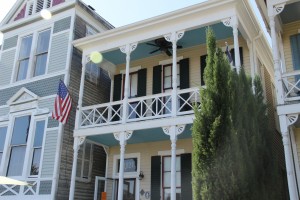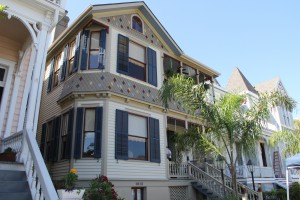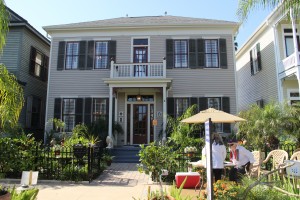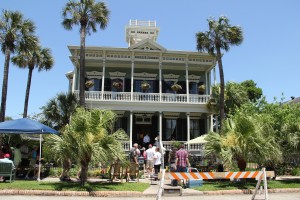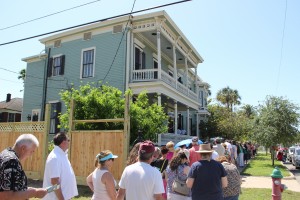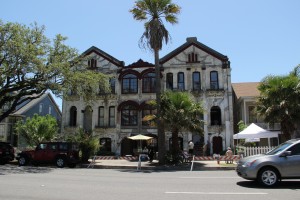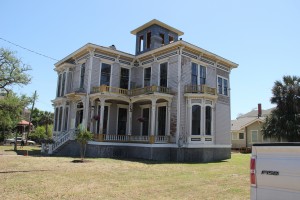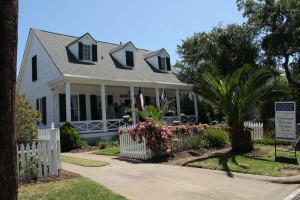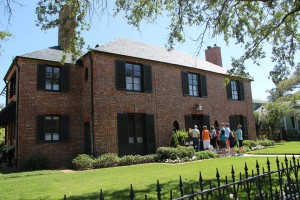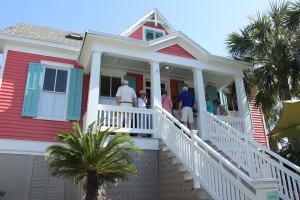This past weekend marked a beautiful start to the 43rd Annual Galveston Historic Homes Tour. The weather was gorgeous, and the powers that be expect the same for this coming weekend. Given such good weather, I anticipated that the tour would have a huge turnout, and boy was that confirmed as the day progressed. Lines were long at some houses, but they moved swiftly. Most homes on the tour have shade for visitors, with the exception of the c1880 Alley House, so you might want to see this one first, before the sun gets too hot.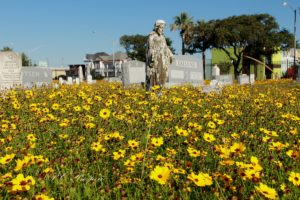
After a stop at the Old City Cemetery on Broadway to photograph the wildflowers, we began at the tour’s Cover House, the 1868 Charles and Susan Hurley House. I immediately understood why this was the premier house on the tour. Its posh landscape along with its lovely exterior can entice all who visit, but a look inside is also a must: this is truly the jewel of the tour. My fondness for this gem only grew during the additional day I spent volunteering there as the gatekeeper on Sunday.
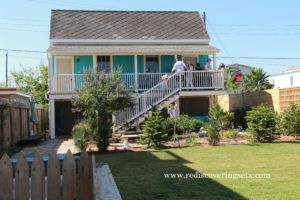 Our next stop was the c1880 Alley House: a very tiny abode, but a well-done restoration. The current owner has done a fabulous job. While you are visiting, please make a note to stay on the runners; although the owner has not requested that all who enter wear booties, he still would not like his floors tarnished from the gravel outside. So wipe your feet!
Our next stop was the c1880 Alley House: a very tiny abode, but a well-done restoration. The current owner has done a fabulous job. While you are visiting, please make a note to stay on the runners; although the owner has not requested that all who enter wear booties, he still would not like his floors tarnished from the gravel outside. So wipe your feet!
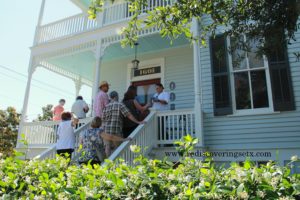 Our next venture was touring the 1904 Thomas and Maggie Bollinger House. Note that this is the only house in which the owners requested all visitors to wear booties. It’s a beautiful house, with varying decor. My favorite was the original 1910 Ouija board!
Our next venture was touring the 1904 Thomas and Maggie Bollinger House. Note that this is the only house in which the owners requested all visitors to wear booties. It’s a beautiful house, with varying decor. My favorite was the original 1910 Ouija board!
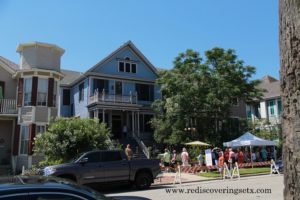 Moving on, we visited the 1905 James and Emma Davis House, where I noticed the amazing wood floors. I decided they surely could not be original, and I was correct in my assumption – but as usual, I was totally wrong on the period! Originally from a bank, they were installed in the house in 1915.
Moving on, we visited the 1905 James and Emma Davis House, where I noticed the amazing wood floors. I decided they surely could not be original, and I was correct in my assumption – but as usual, I was totally wrong on the period! Originally from a bank, they were installed in the house in 1915.
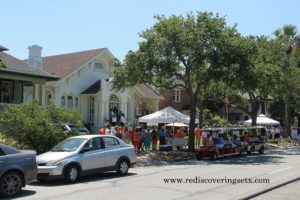 Next on the list were two abodes side by side: the 1925 Joseph and Helen Swiff House and the 1926 Harry and Harriet Wetmore House. The Wetmore house had long lines, but as with the other properties, they moved quickly. Inside, both dwellings had appeal. The blueprint reproductions of the house, including the fireplace, was a nice touch in the Swiff house, and the elevator inside the Wetmore House was priceless.
Next on the list were two abodes side by side: the 1925 Joseph and Helen Swiff House and the 1926 Harry and Harriet Wetmore House. The Wetmore house had long lines, but as with the other properties, they moved quickly. Inside, both dwellings had appeal. The blueprint reproductions of the house, including the fireplace, was a nice touch in the Swiff house, and the elevator inside the Wetmore House was priceless. 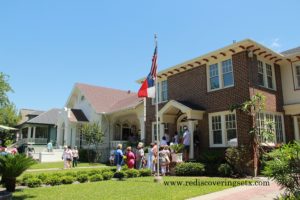
Lunch was our usual. I don’t think we can go to Galveston and not eat at Shrimp and Stuff.
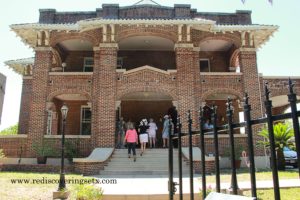 Our second leg of the tour began at the largest house, the 1916 Hans and Marguerite Guldmann House. By size, this castle dwarfed most of the other houses on the tour, and understandably, there was a wait. If you want to see this house, please be prepared for the wait, both in line beforehand and throughout the tour. There is a lot to see.
Our second leg of the tour began at the largest house, the 1916 Hans and Marguerite Guldmann House. By size, this castle dwarfed most of the other houses on the tour, and understandably, there was a wait. If you want to see this house, please be prepared for the wait, both in line beforehand and throughout the tour. There is a lot to see.
The final stop for the restored houses was the 1899 William and Ella Dugey House. It’s a beautiful house, both inside and out, and should be a definite stop on your tour. And yes, 15 people did live in the house. I know this because I was reminded by each docent as we walked through.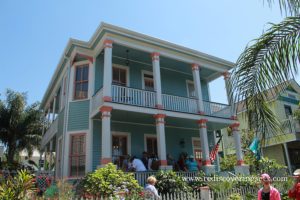
We also visited the 1915 H.W. Hildebrand Tenant House, a restoration in progress. I hope to see it on future tours, along with the 1920 City National Bank Building, which is also being restored.
Overall, the tour included beautiful houses with some modern flair, as expected. The lines for entry were long in a few cases but were generally fast moving, with the exception of the 1916 Hans and Marguerite Guldmann House. The scripts were shortened this year by the Galveston Historical Foundation to help the tour flow more smoothly. After all, most visitors (including me) are there to see the wonderful restorations that the current owners have made inside the houses. So hopefully this will make your visit even grander.
The Galveston Historic Homes Tour will resume this weekend. Hours for both Saturday and Sunday are 10:00 am to 6:00 pm. I will be at the 1926 Harry and Harriet Wetmore House on Sunday from 12:30 to 3:30, so stop by and take a look at this beautiful house. I’ll try not to stand in the way!
